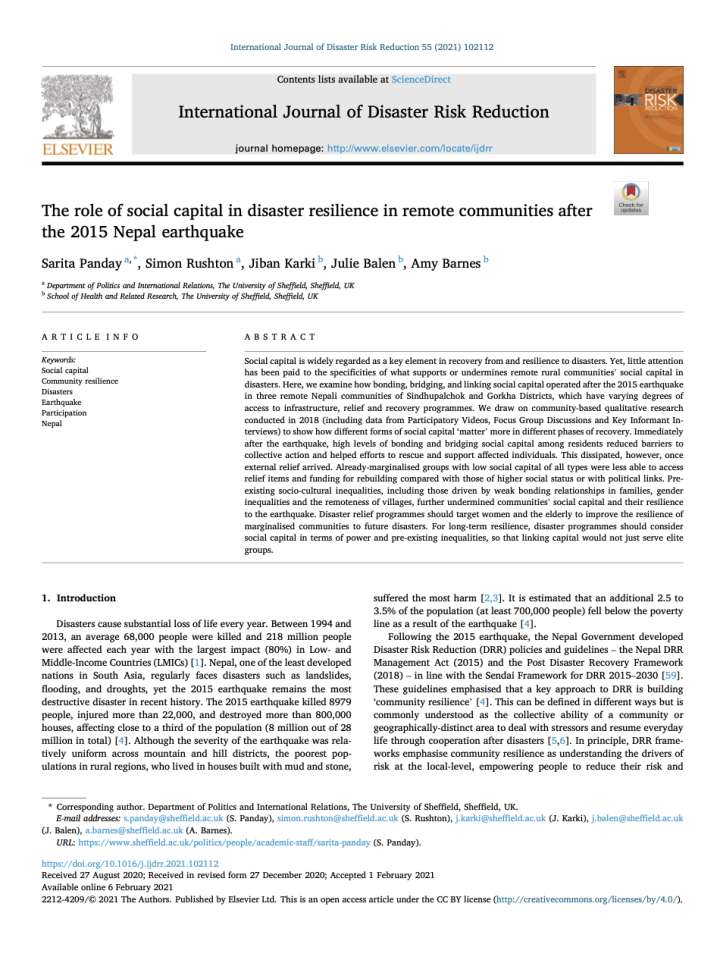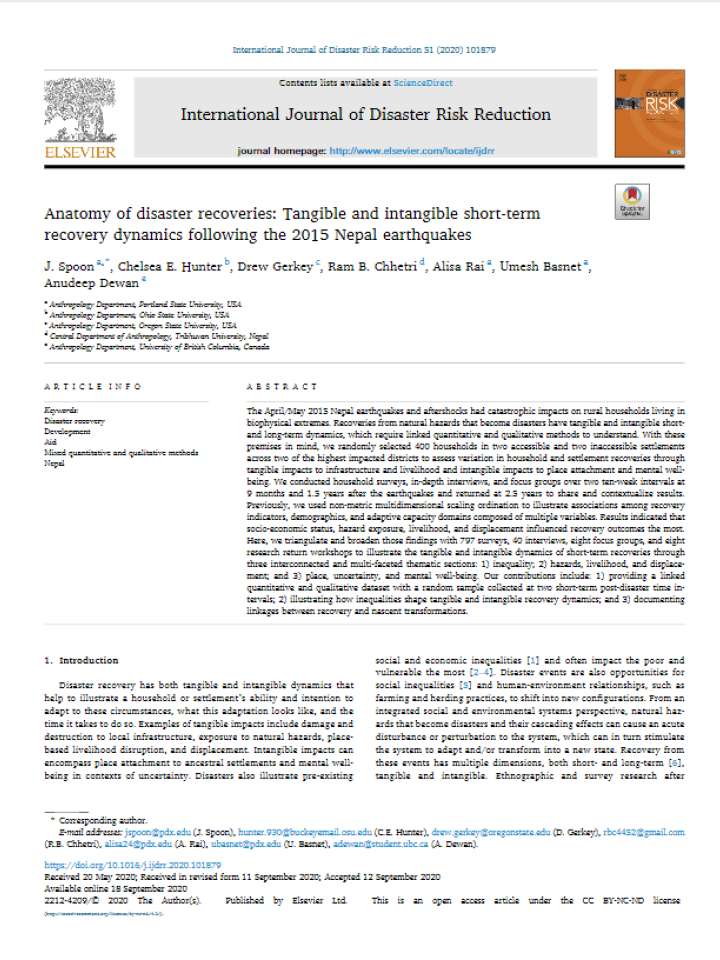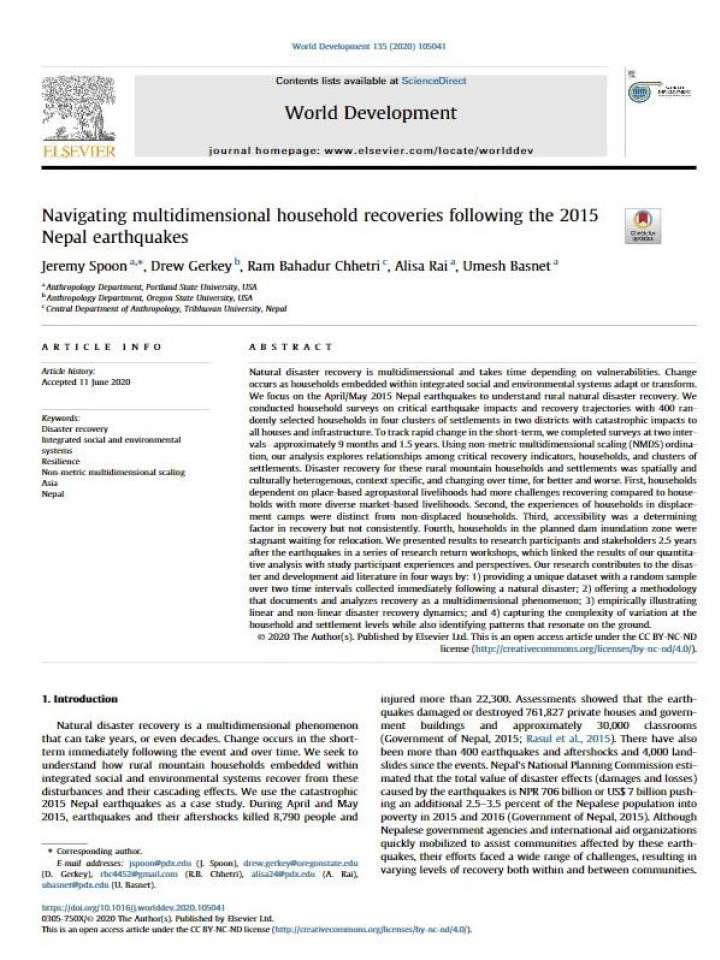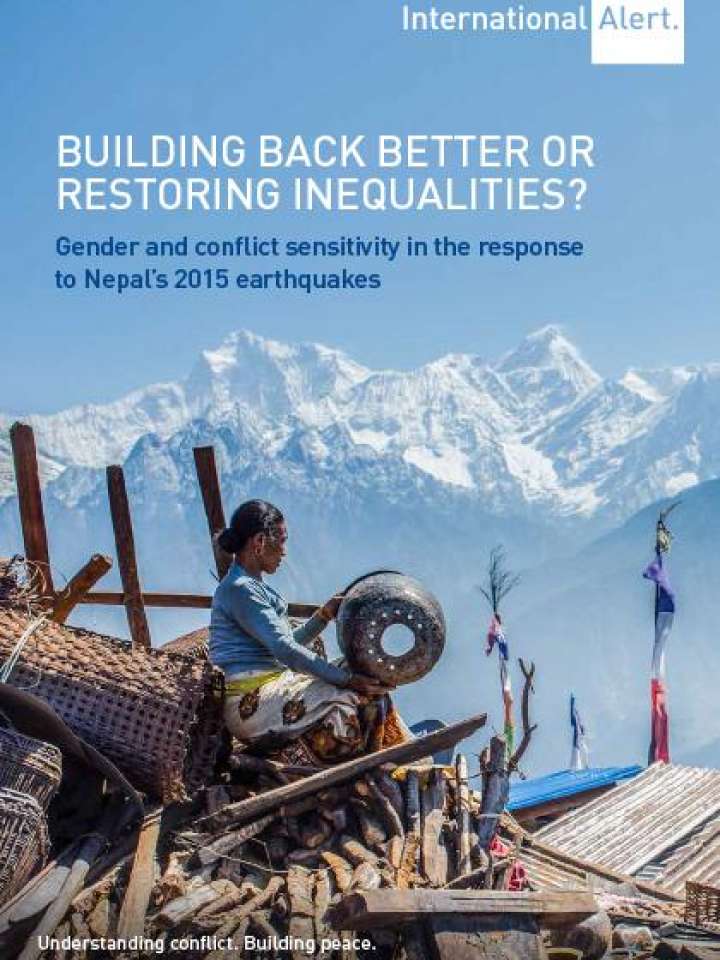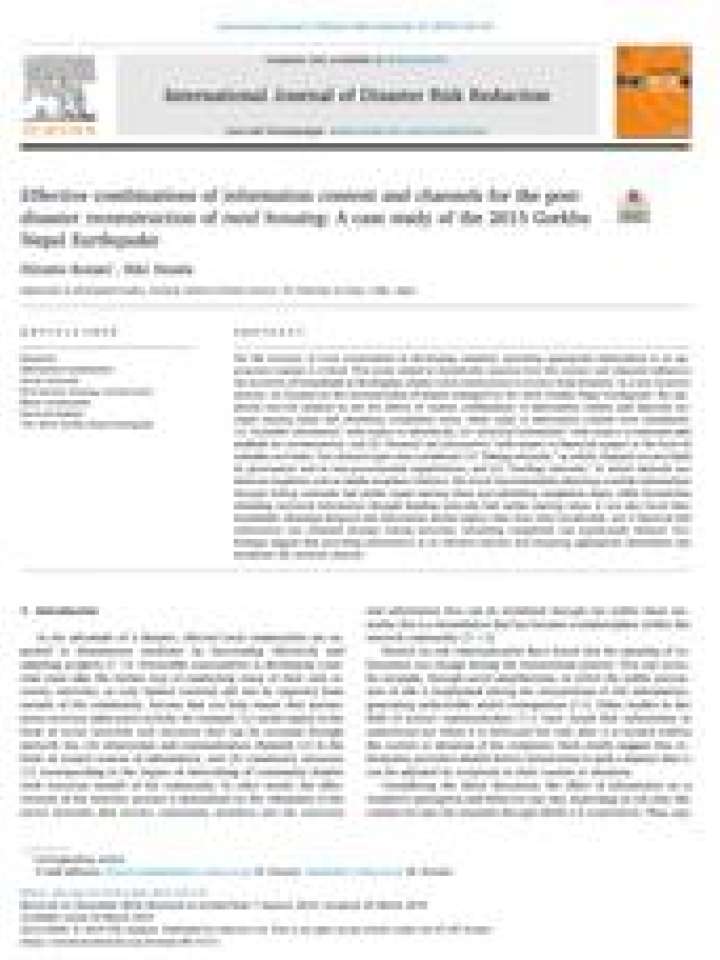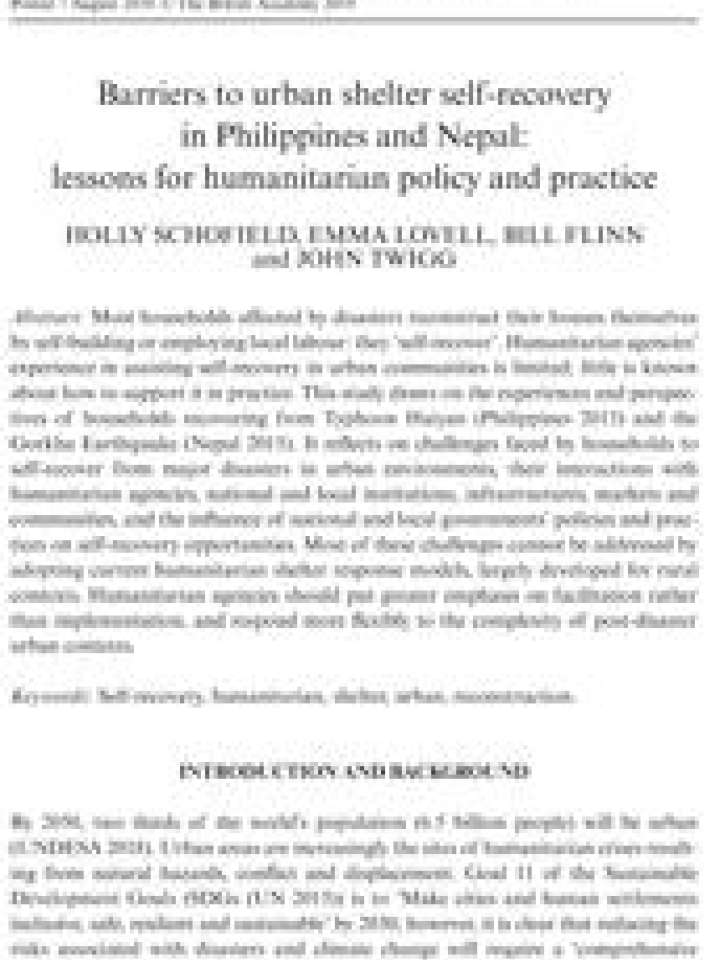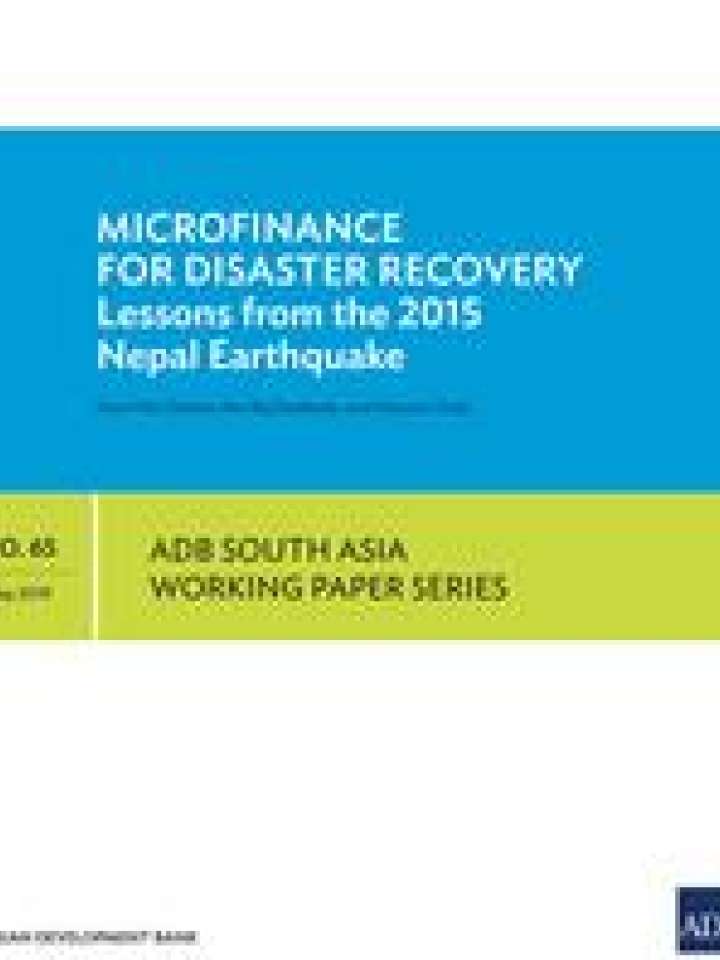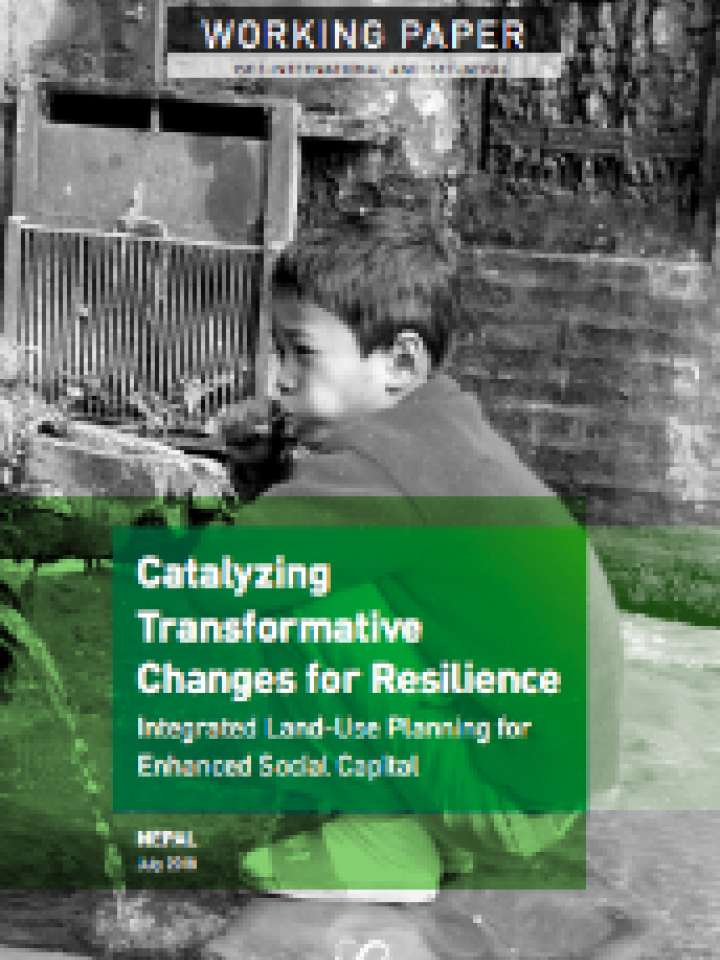Recovery Collection: Nepal: Gorkha Earthquake 2015

Introduction
The Gorkha Earthquake in Nepal occurred on 25 April 2015 and had a magnitude of 7.6. Its epicentre was about 76km northwest of the capital Kathmandu. It was followed by more than 300 aftershocks. Around 9,000 people were killed, of whom approximately 55 per cent were female, and over 100,000 people were injured. Overall eight million people have been impacted, which is almost one-third of the population of Nepal.
The housing sector was by far the most affected, also given that numerous houses in poorer rural areas did not have any seismic-resistant features. Over 500,000 houses were destroyed and another 269,000 damaged, which included historical and cultural monuments recognized as UNESCO World Heritage Sites. In addition to destroyed or damaged key infrastructure livelihoods, e.g. in the agriculture and tourism sector, have been also critically impacted. According to the Post Disaster Needs Assessment by the UN, World Bank and the EU the total value of the damages and losses of the disaster was estimated at US$7.1 billion, while the estimated needs for recovery were US$ 6.7 billion. The damages and losses of the housing sub-sector and the resulting recovery needs accounted for almost half of the total amount respectively.
According to the latest Independent Impacts and Recovery Monitoring by the Asia Foundation around five years after the earthquake the large majority of the affected people live again in their own houses. Out of all households with damaged houses three-quarters now live in either a rebuilt or repaired house or another house not damaged by the earthquake. However, others continue to occupy damaged houses or those without seismic-resistant features. For many households the recovery from the earthquake remains a financial burden, demonstrated by prevalent borrowing. Four per cent who are still living in temporary shelters are in particular need of support.


